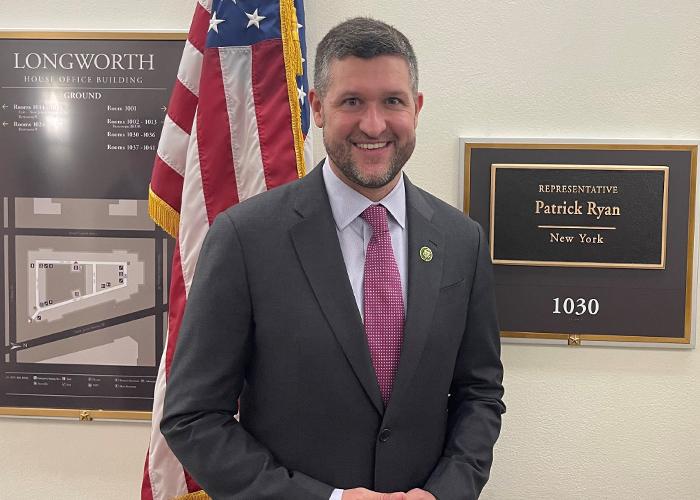
WASHINGTON, D.C. – Congressman Pat Ryan is calling on Verizon to be held Verizon accountable for its network of abandoned toxic lead-sheathed cables that line the country, including locations across the Hudson Valley.
Ryan wrote to Verizon CEO Hans Vestberg and the entire Verizon Board of Directors in regard to a shareholder proposal that would require the company to publicly disclose all locations impacted by lead cables and suggest the most responsible and cost-effective way to remediate sites that pose a risk to public health. Ryan called on Verizon to reverse their recommendation to vote against the proposal and put safety over profits and give fair consideration to the proposal.
“For almost a year, I’ve pushed Verizon to publicly disclose the location of their toxic lead cable network and provide a real plan for remediation. Now, Verizon retirees, the very people exposed to these toxic cables, are echoing that call to action, and Verizon’s board is trying to silence them. It is absolutely disgraceful,” said Congressman Pat Ryan. “It’s time for Verizon to finally put safety ahead of profit and give full consideration to this shareholder proposal. They’re making billions of dollars on the backs of hard-working families, the least they can do is be honest about where the toxic cables are located.”
In July 2023, The Wall Street Journal found that there are more than 2,000 lead-sheathed cables across the United States, both aerial and underwater, that have been allowed to corrode and shed toxic lead into their surrounding environment. This included cables at Temple Park in Wappingers Falls.
In response to the July report, Congressman Ryan wrote to Verizon CEO Hans Vestberg, AT&T CEO John Stankey, and U.S. Telecom CEO Jonathan Spalter demanding additional information on the cables, including their locations and the corporations’ plans to conduct a full, safe clean up of the cables and their contamination.
U.S. Telecom’s response did not address either of these concerns. Ryan then met with representatives of Verizon at his office in Washington D.C. This meeting did not lead to any further answers. To date, Verizon has refused to disclose the locations of these dangerous lead cables. Verizon is currently in litigation with the New York Department of Health as part of their effort to keep the locations of these dangerous lead cables hidden.
The corrosion of aging and outdated lead infrastructure, from cables to pipes, can cause toxic lead to leach into the environment, placing humans at risk for exposure. Lead exposure can cause severe health complications in humans, including neurological damage in children and cardiovascular, kidney, and reproductive health issues in adults. No amount of lead exposure is safe and the toxin can be stored in bones and teeth and accumulate in the body over time.








